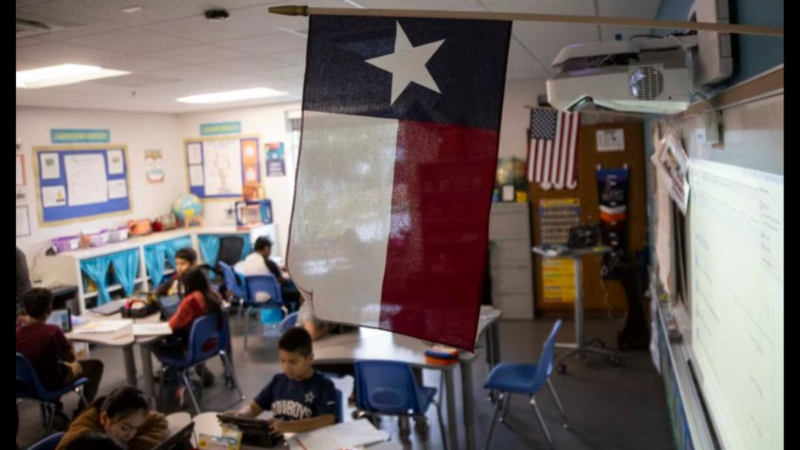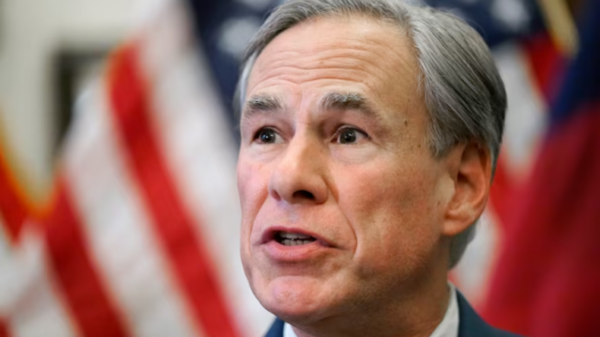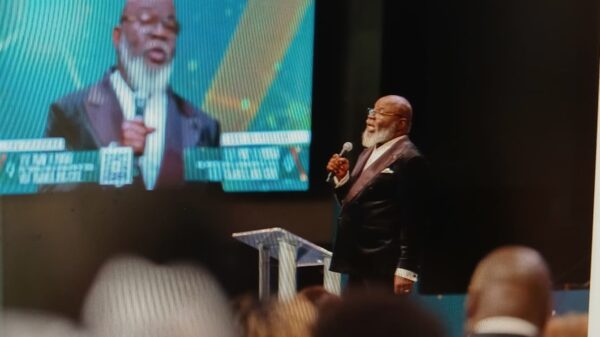
It’s been more than a year and a half since Gov. Greg Abbott called for a task force to address Texas’ teacher shortage. In the spring of 2022, he asked for a group to develop policy recommendations to ensure all students learn from a quality educator.
Since then, several of the task force’s ideas have been caught up in one of Abbott’s political fights. Legislation that aimed to improve teacher recruitment and retention died during the regular session after finding its fate tied to a controversial plan to funnel public dollars toward private school tuition.
Now – during the third special session – the question of whether some of the Texas Teacher Vacancy Task Force’s recommendations come to fruition is linked to whether the Legislature votes to create education savings accounts, the voucherlike program Abbott is championing.
“The discussions about vouchers have overshadowed what effectively could be monumental improvements for teachers,” said Charles R. Martinez Jr., dean of the University of Texas at Austin’s College of Education. “What’s at stake, honestly, is the next generation of Texans. I can’t think of a more compelling reason to collectively find a way to act.”
Abbott has said he will not expand the special session’s agenda to include public school funding, which includes teacher pay, until an ESA deal is done.
Meanwhile, rural Republicans and Democrats in the House have repeatedly voted down voucherlike proposals. They’re united in their concern that education savings accounts will take money away from the public schools that serve the majority of Texas children.
Lawmakers appear at an impasse.
At the same time, state officials said the percentage of Texas teachers leaving the profession last year rose to a historic high. Schools across the state also hired far more new teachers without a state certification. Public education advocates worry a larger exodus is coming.
To Melina Recio, a teacher in McAllen, the educator vacancy crisis remains apparent. She said she feels it in her district even more than when she joined the state’s task force last year. Recio said she’s trying to remain hopeful about this current special session.
“The different recommendations that came out of the task force are things that legislators want to get done for their communities,” she said. “They want to get this done for their teachers, for their students.”
If the Legislature were to make progress on negotiating a deal, here are some of the things it may do for public school teachers.
Teacher bonuses
Many teachers cite insufficient pay as one reason they’re thinking about leaving the educator workforce.
“Pay raises need to happen at state and local levels. Inflation, rising gas prices, rising insurance premiums and we never get a decent raise,” one educator told the Teacher Vacancy Task Force on a survey as the group collected feedback.
In both the House and the Senate, lawmakers have put forward proposals to give retention bonuses to public school teachers.
Sen. Brandon Creighton, R-Conroe, proposed giving teachers in small districts a $10,000 retention bonus. In districts of more than 5,000 students, the bonuses would instead be $3,000.
A proposal from Rep. Brad Buckley, the Republican chair of the House education committee, suggested a $4,000 bonus for full-time employees and $2,000 for part-time workers.
A longshot bill from House Democrats asks for $15,000 bonuses for teachers, librarians and counselors, along with $5,500 for support staff.
To Recio, bonuses are a sign of good faith that lawmakers want to make teaching feel sustainable.
Based on the state’s minimum salary schedule, Texas teachers can start at just under $34,000. It could take two decades to reach $54,540. Many school systems pay far above the minimum, but small and rural districts often lag behind, according to state data, creating disparities in pay based on where a teacher works.
Quality teacher preparation
Texas has seen an explosion in the number of new teachers who train for the classroom through for-profit, online preparation programs.
How a teacher is prepared for the classroom matters, state officials emphasize. Those who come in through traditional pathways tend to remain in the educator workforce longer.
Over a nine-year period, university-certified teachers had a 24% higher retention rate than alternatively certified teachers, according to a report from the College of Education at UT Austin.
Buckley’s bill takes a multi-pronged approach to improving teacher preparation. One component of his proposal would establish a Texas teacher residency program, in which “resident” teachers would get field-based training while working alongside an experienced educator in the classroom.
Education Commissioner Mike Morath has long expressed support for such a system. Some educator preparation programs already embrace “residencies” that train teachers in the model of doctors. But leaders say more funding, and policy changes, are necessary to scale up the idea.
Under Buckley’s bill, Texas would help cover the cost of resident salaries. For each resident, a district could receive between $22,000 and $42,000.
Jean Streepey, a Highland Park teacher who served on the teacher vacancy task force, said she was also glad to see support for “grow your own” programs. Such a program could help paraprofessionals or high school students get on track to becoming certified teachers.
“That’s a significant opportunity for us on the preparation side,” Streepey said.
Pathways for increased pay
Buckley’s legislation also contains provisions that would influence how teachers are paid long-term.
It establishes new minimum salaries, factoring in years of experience and the kind of training a teacher received. Uncertified teachers, for example, could be paid less than those who went through a residency.
The legislation would also give a slight boost to the base amount of money allocated to school districts based on how many students they serve. Much of that money would have to go toward compensation.
Lawmakers are also debating the expansion of what educators can earn under the Teacher Incentive Allotment. Under this system, if teachers can show they’re highly effective at their job through specific steps, they can get higher salaries. The approach was sold with the promise that educators could eventually earn six figures – although few do.
So far, only a small percentage of Texas teachers are designated for those funds.
The DMN Education Lab deepens the coverage and conversation about urgent education issues critical to the future of North Texas.
The DMN Education Lab is a community-funded journalism initiative, with support from Bobby and Lottye Lyle, Communities Foundation of Texas, The Dallas Foundation, Dallas Regional Chamber, Deedie Rose, Garrett and Cecilia Boone, The Meadows Foundation, The Murrell Foundation, Solutions Journalism Network, Southern Methodist University, Sydney Smith Hicks and the University of Texas at Dallas. The Dallas Morning News retains full editorial control of the Education Lab’s journalism.
This story, originally published in The Dallas Morning News, is reprinted as part of a collaborative partnership between The Dallas Morning News and Texas Metro News. The partnership seeks to boost coverage of Dallas’ communities of color, particularly in southern Dallas.









You must be logged in to post a comment Login